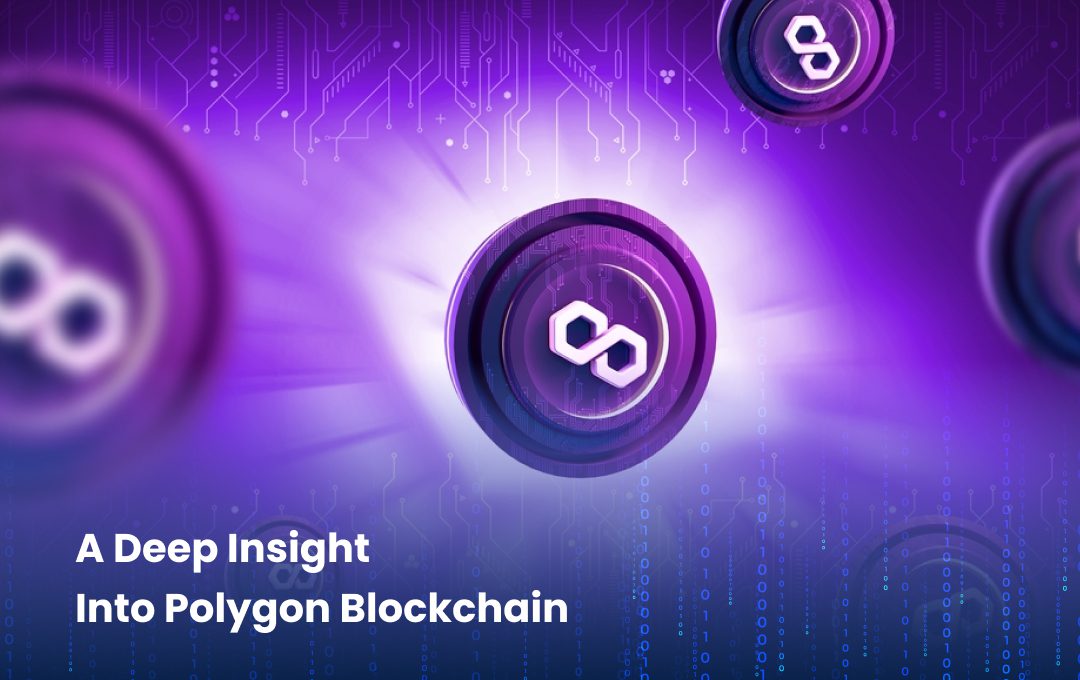It is impossible to deny Ethereum's current market leadership position. Ethereum has 46,39b users, accounting for approximately 64 percent of all platforms. It is frequently used to create marketplaces and decentralized apps (dApps),.... However, as the number of users grows, it causes network congestion, slow speeds, and high transaction costs, raising scalability concerns in Ethereum. As a result, while waiting for the upgraded version, Polygon has been introduced as a solution to Ethereum issues. This blockchain network is gaining popularity as a possible framework for constructing interconnected Ethereum-compatible blockchain networks. To learn more about Polygon Blockchain, let’s continue reading the article below!
1. What Is Polygon Blockchain?
Also known as “Ethereum’s internet of blockchains”, Polygon is a blockchain scalability platform created exclusively for the Ethereum blockchain. As the Ethereum network grows in popularity, it displays some shortcomings, such as slow transaction speeds, high fees, and limited developer options. Therefore, Polygon was created as an add-on solution to boost the Ethereum platform's adaptability and scalability while also providing improved levels of liquidity, interoperability, and security.
Polygon is a layer-2 aggregator with the goal of establishing a multichain ecosystem of blockchains that are compatible with Ethereum and have superior interoperability. Users can 'bridge' some of their cryptos to Polygon and then engage with a number of popular crypto applications that were previously only available on the Ethereum main blockchain. Meanwhile, developers can use the Polygon platform to connect their Ethereum-compatible smart contracts and create scalable dApps with low transaction fees.
Polygon also issues its token called MATIC, which ranks #18 on Coinmarketcap. The Polygon token price is now roughly $0,5 with $4,216,147,612 total market value (as of 5 July).

Polygon token price on Coinmarketcap
2. How Does Polygon Blockchain Work? The Polygon Architecture
Being a layer-2 solution framework, the architecture of the Polygon network is quite simple yet effective. It contains four layers throughout its system, including the Ethereum layer, security layer, Polygon network layer, and execution layer.
- Ethereum layer: This layer, which consists of a collection of Ethereum-based smart contracts, is used for staking, transaction finality, and communication between Ethereum and Polygon chains.
- Security layer: It provides a periodical check of the validity of any Polygon chain for a fee and offers additional security to the chains.
- Polygon network layer: It is a collection of sovereign blockchain networks. Each blockchain network has its own community and performs functions like a local consensus, transaction collation, and block production. The Polygon protocol also allows the networks to connect with each other by exchanging arbitrary messages.
- Execution layer: This is a place to execute smart contracts for transactions. The layer is also known as the Polygon's Ethereum Virtual Machine (EVM) implementation because it is made up of two other sublayers: the execution environment (Polygon's Ethereum Virtual Machine (EVM) implementation) and execution logic (a Polygon network's state transition function).
3. Polygon’s Benefits and Limitations
When it comes to advantages, Polygon can support Ethereum by allowing countless dApps to utilize Ethereum's features without being constrained by the platform's limitations. More specifically:
- Polygon's EVM compatibility enables Ethereum developers to launch dApps with a few clicks while benefiting from faster and cheaper transactions.
- Interoperability refers to the ability of multiple cross-chain protocols to exchange data between Polygon and other chains.
- Polygon network is more environmentally friendly because it uses the PoS consensus algorithm, which demands 99.99% less energy than the existing Ethereum version's PoW.

The PoS model makes Polygon more environmentally- friendly
Everything, however, has two sides, and Polygon is no exception. It has limited resell support because the platform does not currently support auctions. Furthermore, the security of Polygon transactions is still not guaranteed.
4. Will Ethereum 2.0 Eliminate The Need For Polygon?
Ethereum 2.0 is a significant update to the current Ethereum network, which will help to boost network speed while cutting transaction fees. The question now is "Will Ethereum 2.0 Kill Polygon Matic?". Luckily, the answer could be probably no.
Layer 2 solutions like Polygon can continue to support and improve Ethereum chain utility. Who can guarantee that the next Ethereum version will not become congested shortly after it is released? As more users join and thousands of new dApps, as well as high-frequency trading and NFT development, ETH 2.0 may soon reach its scaling limits. As a result, gas fees will rise, and the network may wind up in the same situation as previously. Polygon will be able to significantly improve the Ethereum 2.0 experience at that time, ensuring the best possible experience for all users and developers.
Related: Ethereum 2.0: Empower The Crypto World To A New Level
5. Final Thoughts
To summarize, the Polygon network's solutions are responses to some of Ethereum's most serious concerns. Polygon can give more than just a simple layer-scaling solution; it can also provide the architecture needed to build a network of diverse blockchains with complete interoperability.
In case you are wondering “What are the best Blockchain development companies?” or “Blockchain development - who should I hire?”, don’t hesitate to contact us. Our Blockchain capabilities range from Polygon, Ethereum, Solana to Cosmos, Cardano,... so no matter which Blockchain platform you choose to launch your project on, we can all serve. Furthermore, SotaTek blockchain experts have extensive experience in developing blockchain-based solutions, such as advanced Cryptocurrency Exchange, NFT Marketplace, Blockchain-based game, Crypto Wallet, IDO/IEO/STO Consulting, Smart Contracts... with cost-optimized white-label option. Therefore, your business can enter this explosive market quickly. So, why not join us right now to kickstart our project?
For more information, hit us up via:
Email: contact@sotatek.com
LinkedIn: https://www.linkedin.com/company/sota-tek-.-jsc/
Twitter: https://twitter.com/SotaTek



